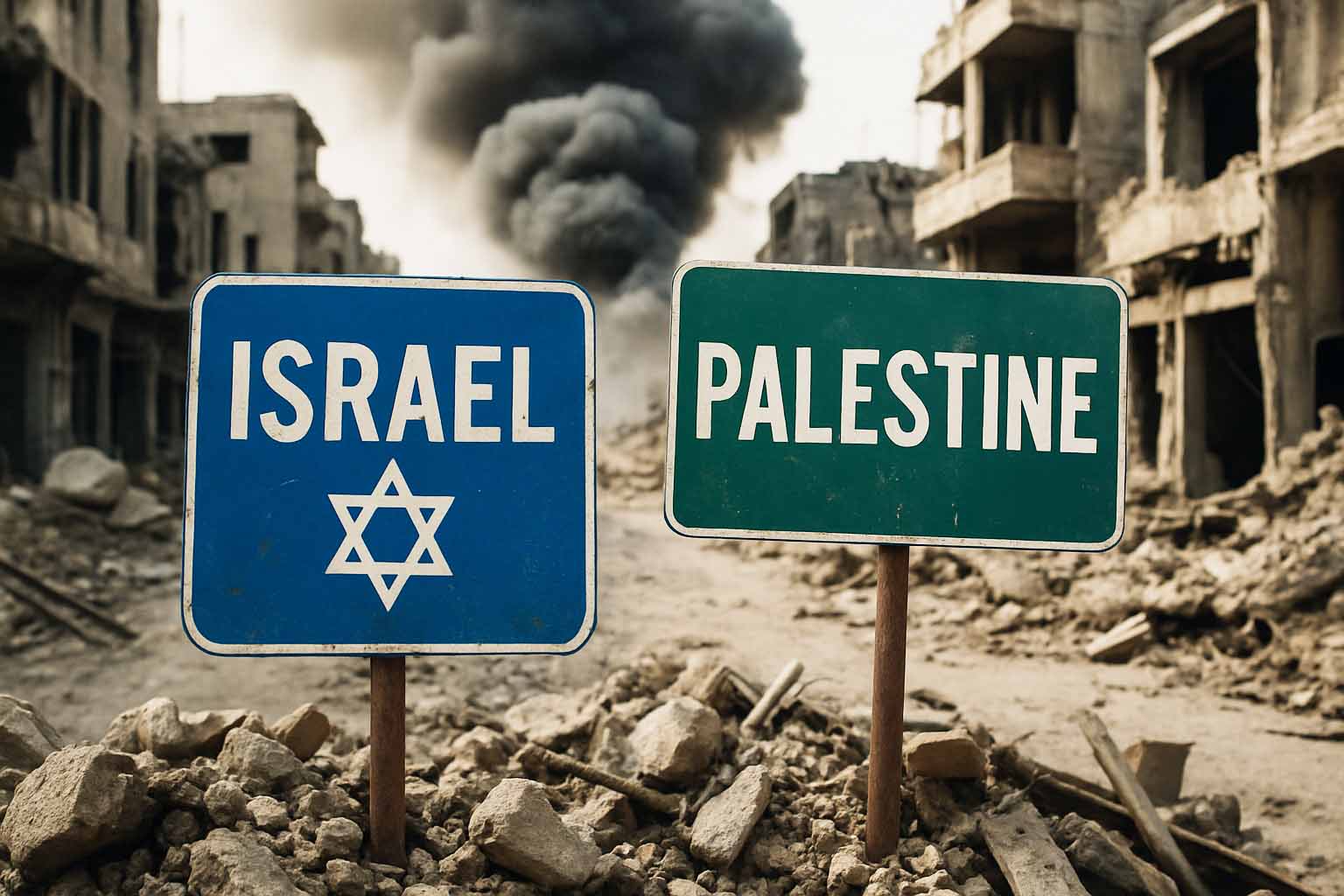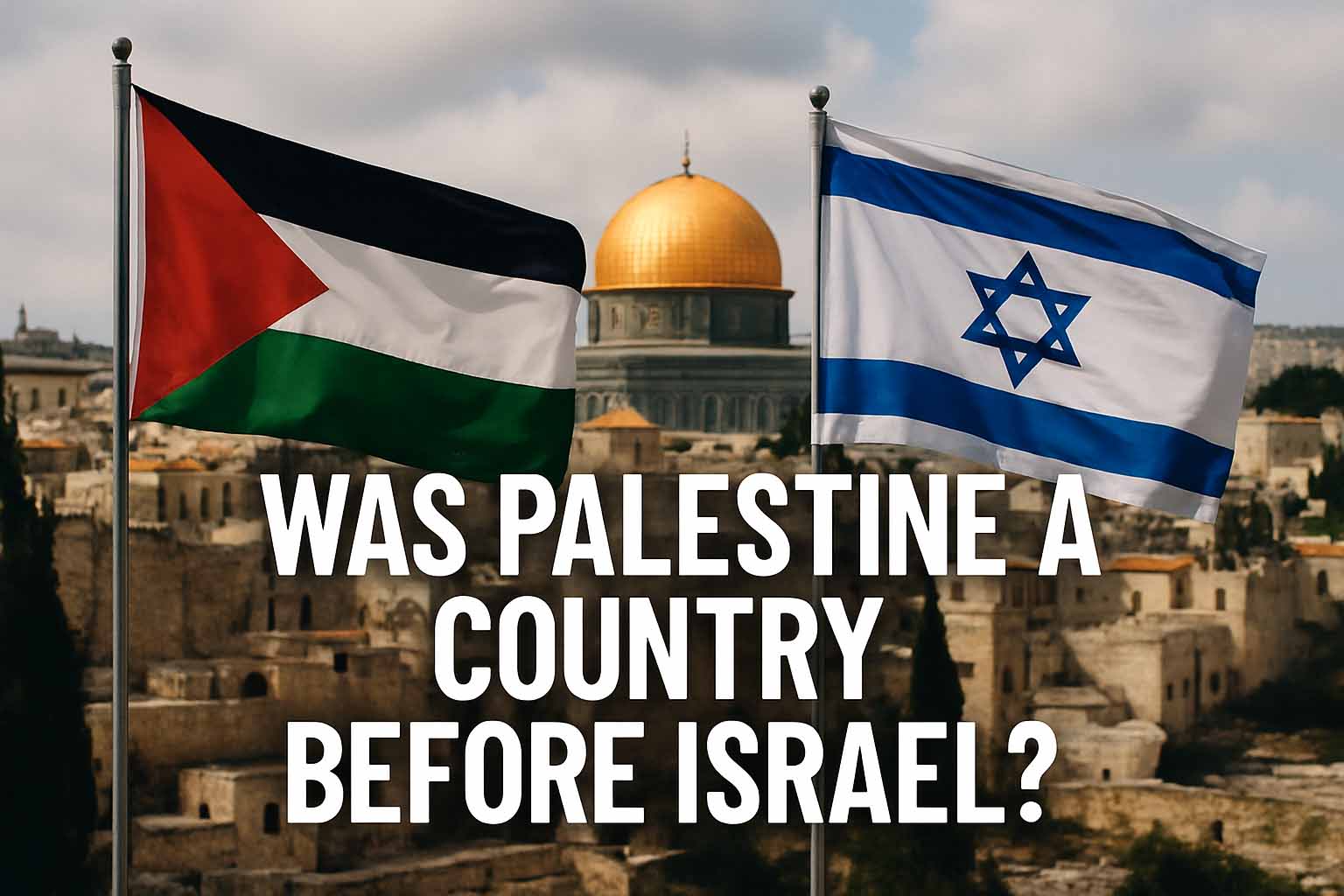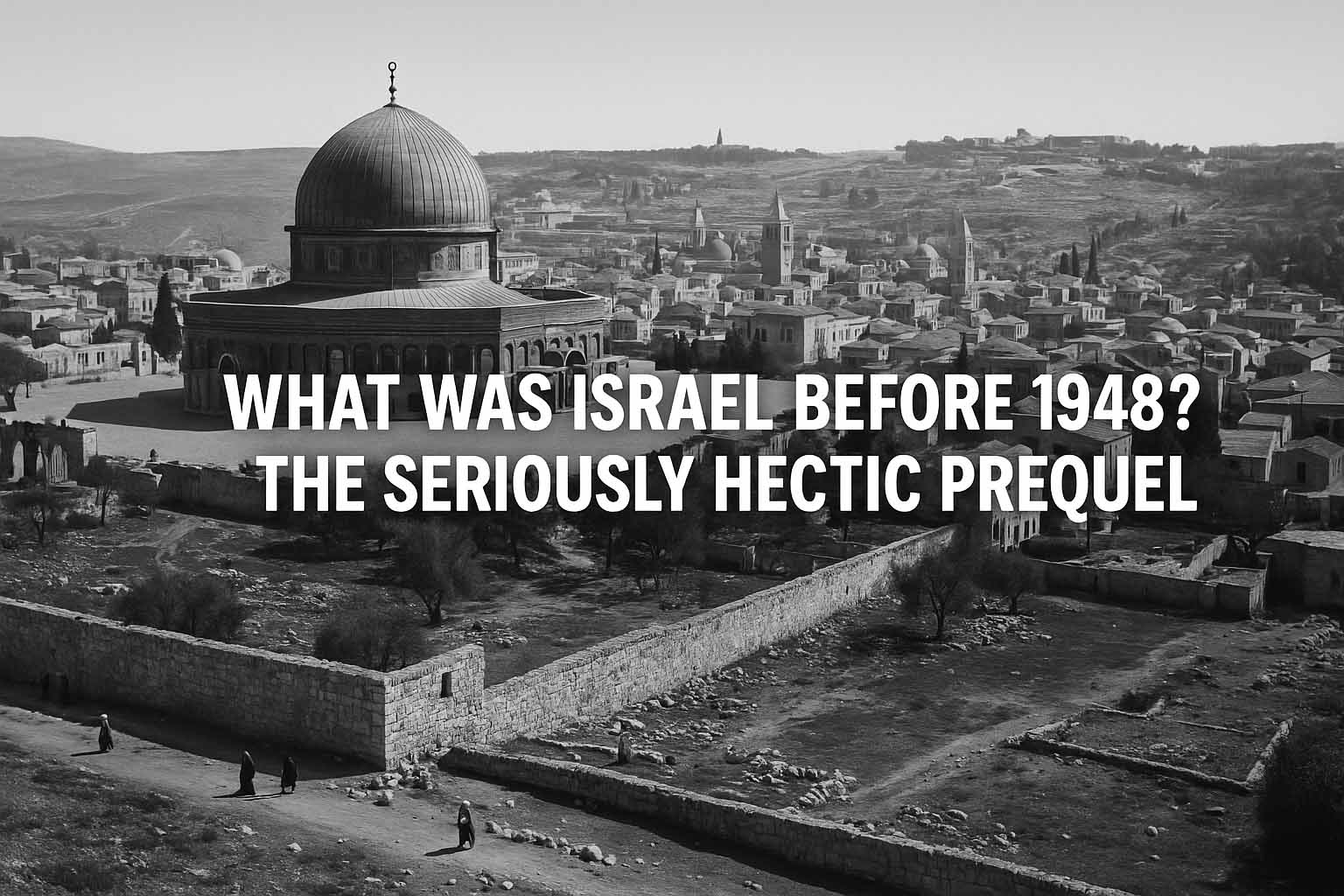Think of it as the world’s most tragic and long-running roommate dispute. Over a house everyone considers holy.
1️⃣ The Lightning-Fast Version (If You Have 60 Seconds)
TL;DR:
At its core, the Israeli-Palestinian conflict is a dispute over the same piece of land between two groups of people: Jews and Palestinian Arabs. Both have deep historical and religious ties to it, and both see it as their national homeland, leading to a century-plus of conflict, wars, and failed peace deals.
What Actually Happened:
- The Set-Up (Early 20th Century): The land was ruled by the Ottoman Empire, then taken over by Britain after WWI. The British, in a masterclass of diplomatic chaos, made conflicting promises to both Arab and Jewish groups about its future.
- The Split (1947–1948): The United Nations voted to divide the land into two states—one Jewish (Israel), one Arab (Palestine). The Jewish leadership accepted; Arab leaders rejected it. War broke out. Israel was established, and hundreds of thousands of Palestinians fled or were expelled in an event they call the Nakba, or “catastrophe.”
- The Game-Changer (1967): In the Six-Day War, Israel captured the West Bank, East Jerusalem, and the Gaza Strip from its neighbors. This began the military occupation of those territories, which is a central issue in the conflict today.
- The Rollercoaster (1990s–Now): Peace talks in the ’90s (the Oslo Accords) offered a glimmer of hope for a “two-state solution” but ultimately collapsed. Since then, the conflict has been defined by a cycle of Palestinian uprisings (Intifadas), Israeli military actions, the expansion of Israeli settlements, and the rise of militant groups like Hamas.
Why It Matters:
This isn’t just a local dispute. It’s a major driver of instability in the Middle East, a key issue in global politics, and an unresolved humanitarian crisis for millions of Palestinians.
Bonus Fun Fact:
The “Green Line,” often mentioned in news reports, isn’t a physical line. It’s the armistice line from the end of the 1948 war, drawn on the map with a green pen, which served as Israel’s de facto border until 1967.
Oversimplified Rating: 🔥🔥🔥🔥🔥 Five-Alarm Dumpster Fire Level
2️⃣ So You Want the Real Story? Okay, Deep Breath…
How Did This All Begin? The Spark of Two Nations
To understand the conflict, you have to go back to the late 19th century. Europe was a hotbed of nationalism—the idea that every “people” deserved their own country. Two of these movements would find themselves on a collision course.
- Zionism: In response to centuries of persecution and rising antisemitism in Europe, Jewish thinkers and leaders launched the Zionist movement. Its goal was to re-establish a Jewish national home in their ancestral land, also known as Zion or the Land of Israel. This spurred waves of Jewish immigration to what was then Ottoman-controlled Palestine.
- Palestinian Nationalism: At the same time, the Arab inhabitants of the region were developing their own distinct national identity. For centuries, they had been subjects of the Ottoman Empire, but as it weakened, they too began to desire independence and self-determination, seeing Palestine as their homeland.
Initially, these two communities lived alongside one another, but as more Jewish immigrants arrived and bought land, tensions began to grow. Both saw the same territory as their rightful future country.
The British Arrive and Make Everything More Complicated
After the Ottoman Empire collapsed in World War I, Britain was given control over the territory with a “Mandate” from the League of Nations. The British job was to govern the area until it was ready for independence. The problem? They had already made conflicting promises:
- To the Arabs, they had hinted at supporting an independent Arab state.
- To the Jews, they issued the 1917 Balfour Declaration, supporting a “national home for the Jewish people” in Palestine.
This set the stage for disaster. Throughout the 1920s and ’30s, Jewish immigration increased, and so did Arab resistance. Violence erupted. Unable to satisfy either side, Britain threw in the towel in 1947 and handed the problem to the new United Nations.
The Wars That Drew the Modern Map: 1948 and 1967
These two wars are the critical turning points of the conflict.
The 1948 War (Israel’s War of Independence / The Palestinian Nakba)
The UN proposed partitioning the land into two states. The Jewish Agency accepted. The Arab League rejected it. When Britain left on May 14, 1948, Israel declared independence. The next day, armies from five neighboring Arab countries invaded. Israel won the war, but in the process, it took control of more land than the UN plan had allotted. For Palestinians, the war was a catastrophe (Nakba). Over 700,000 people—more than half the Arab population—fled or were driven from their homes, creating a refugee crisis that remains unresolved.
The 1967 Six-Day War
After years of high tension, Israel launched a preemptive strike against Egypt, sparking a war with Egypt, Jordan, and Syria. In a stunning military victory, Israel captured crucial territory:
- The West Bank and East Jerusalem from Jordan.
- The Gaza Strip and the Sinai Peninsula from Egypt.
- The Golan Heights from Syria.
This victory fundamentally changed the conflict. Israel was no longer just defending its borders; it was now a military occupier of millions of Palestinians. This is the origin of the “occupation” you hear about today.
The Vicious Cycle: Peace Talks, Uprisings, and Entrenchment
The decades after 1967 have followed a grim pattern.
The Oslo Accords in the 1990s were the most promising attempt at peace. The plan was for Israel to gradually withdraw from the West Bank and Gaza, leading to an independent Palestinian state—the “two-state solution.” It created the Palestinian Authority to govern parts of the territories. But the process was plagued by violence from extremists on both sides, continued building of Israeli settlements in the West Bank, and ultimately collapsed after the assassination of Israeli Prime Minister Yitzhak Rabin by a Jewish extremist.
The failure of the peace process led to the Second Intifada (2000-2005), a far bloodier Palestinian uprising. Since then, Israel has built a separation barrier around the West Bank, withdrawn its soldiers and settlers from Gaza (which then came under the control of the militant group Hamas), and continued to expand settlements. This has been met with cycles of rocket fire from Gaza and major Israeli military operations, while the situation in the West Bank remains a tense, low-level conflict.
Debunking a Common Myth: “This Conflict is Thousands of Years Old”
While both Jews and Arabs have ancient roots in the land, the political conflict we know today is not ancient. It’s a modern, 20th-century clash between two nationalist movements. Framing it as an eternal religious war is an oversimplification that ignores the core issues of land, sovereignty, and national rights that have driven the fighting for the last 100+ years.
🔍 Mini FAQ: What People Also Ask
Q: What is the two-state solution?
A: It’s the most widely supported framework for peace, which proposes an independent State of Palestine in the West Bank and Gaza Strip, existing alongside the State of Israel.
Q: What are Israeli settlements?
A: They are communities built by Israel on land it captured in the 1967 war (the West Bank and East Jerusalem). Most of the international community considers them illegal under international law.
Q: Who are Palestinian refugees?
A: Palestinians who fled or were expelled from their homes during the 1948 war, along with their descendants. Their “right of return” is one of the most difficult issues in the conflict.
Q: What is Hamas?
A: Hamas is a Palestinian Islamist political and militant organization that has governed the Gaza Strip since 2007. It is designated as a terrorist organization by Israel, the United States, and the European Union, among others.
Q: Why is Jerusalem so important?
A: The city contains some of the holiest sites for Judaism, Christianity, and Islam. Both Israelis and Palestinians claim it as their capital, making its status a deeply emotional and politically explosive issue.
Q: What is the “occupation”?
A: This refers to Israel’s military control over the West Bank and East Jerusalem, which it has occupied since the 1967 Six-Day War.
Q: Who supports which side?
A: Generally, the United States has been Israel’s strongest ally. Many Arab and Muslim-majority nations support the Palestinians. European countries have tried to play a more mediating role.
Q: Is there any hope for peace?
A: Officially, the peace process is stalled and prospects look bleak. However, many Israeli and Palestinian grassroots organizations continue to work together toward coexistence and a non-violent solution.


